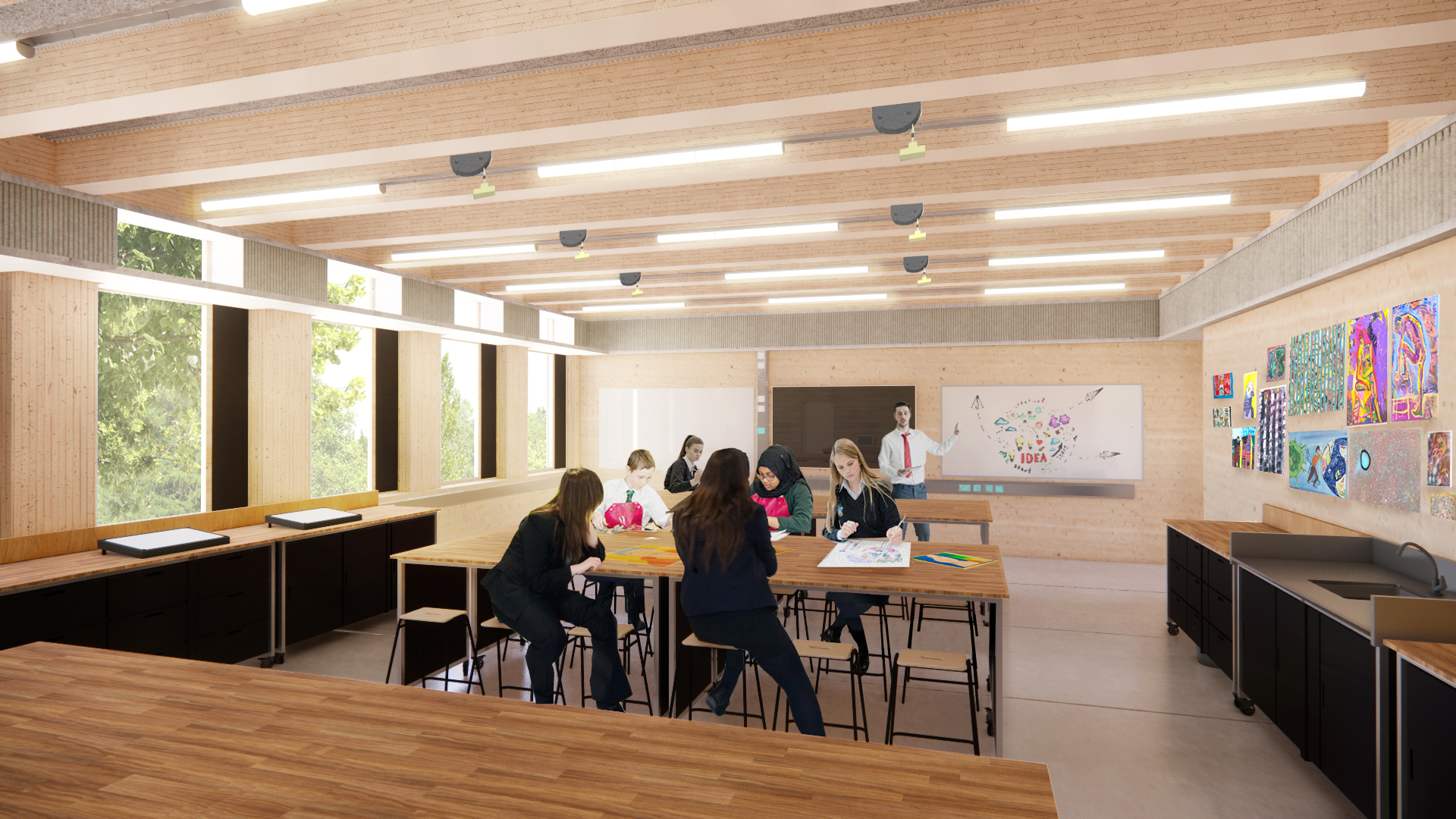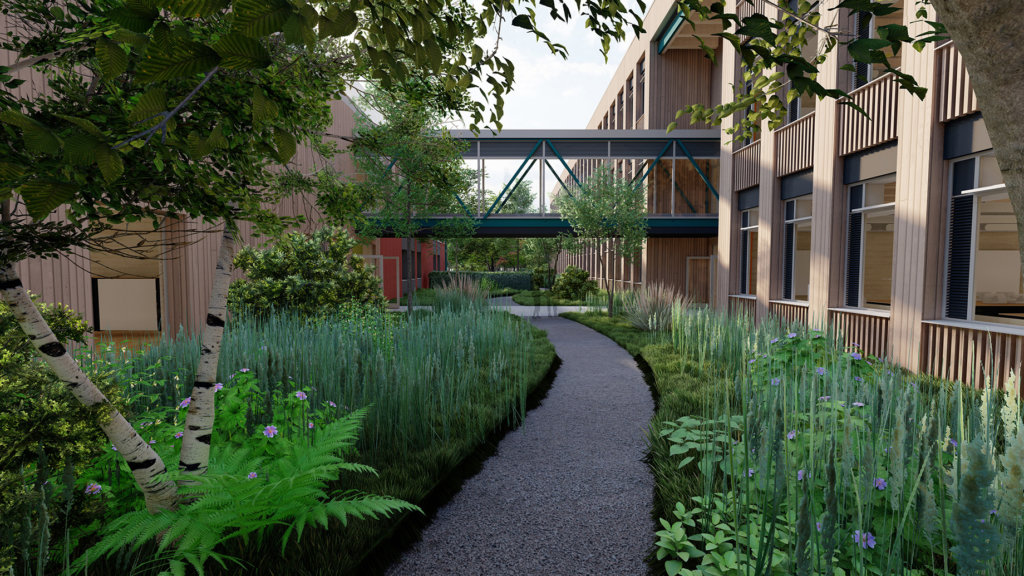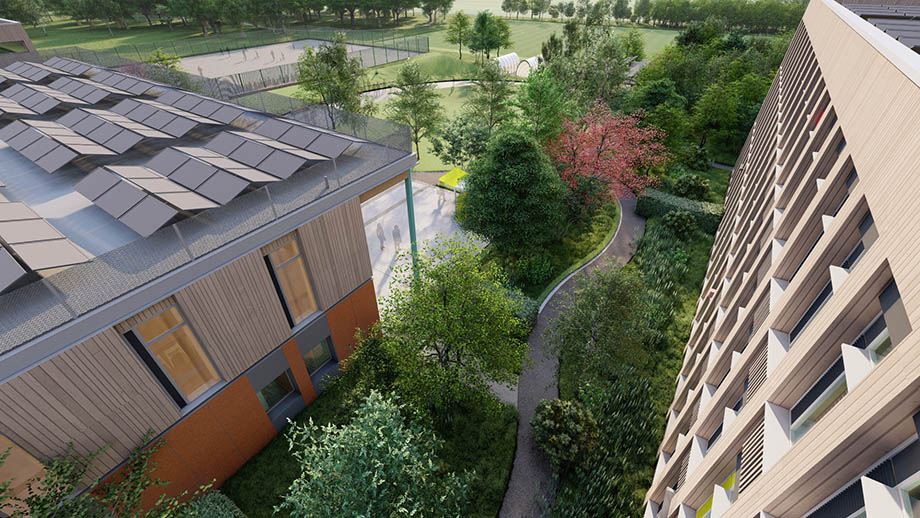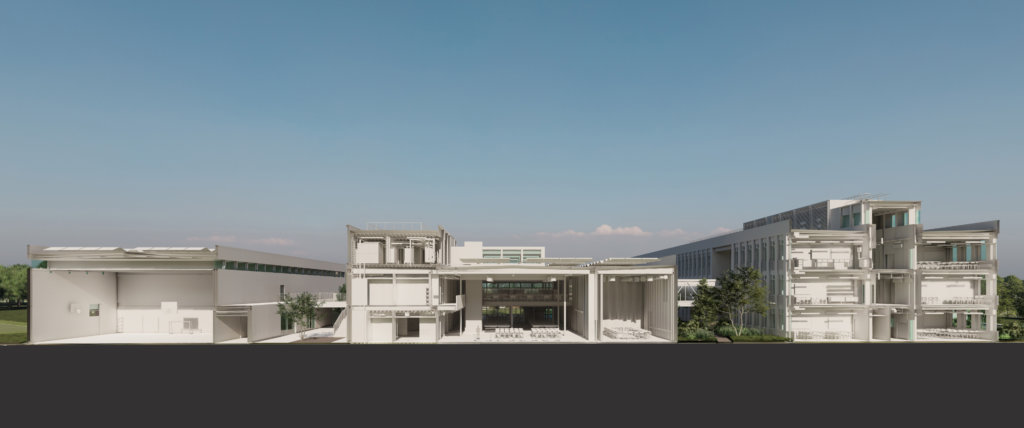Collaborative research heralds new design standards for sustainable school buildings
Lyall Bills & Young was appointed architect on the project, working in close collaboration with a large team of consultants ranging from mechanical, electrical and civil engineers through to carbon consultants and landscape designers.
Running from summer 2020 to summer 2021 and completing at RIBA Stage 4, the project delivered two secondary school prototype designs on demonstration sites, as well as a prototype classroom that was showcased at COP26 in Glasgow.
Furthermore, as a key output of the GenZero project, the team developed and defined a series of strategies for the future creation of sustainable school buildings and grounds which are already feeding into other live projects around the country.
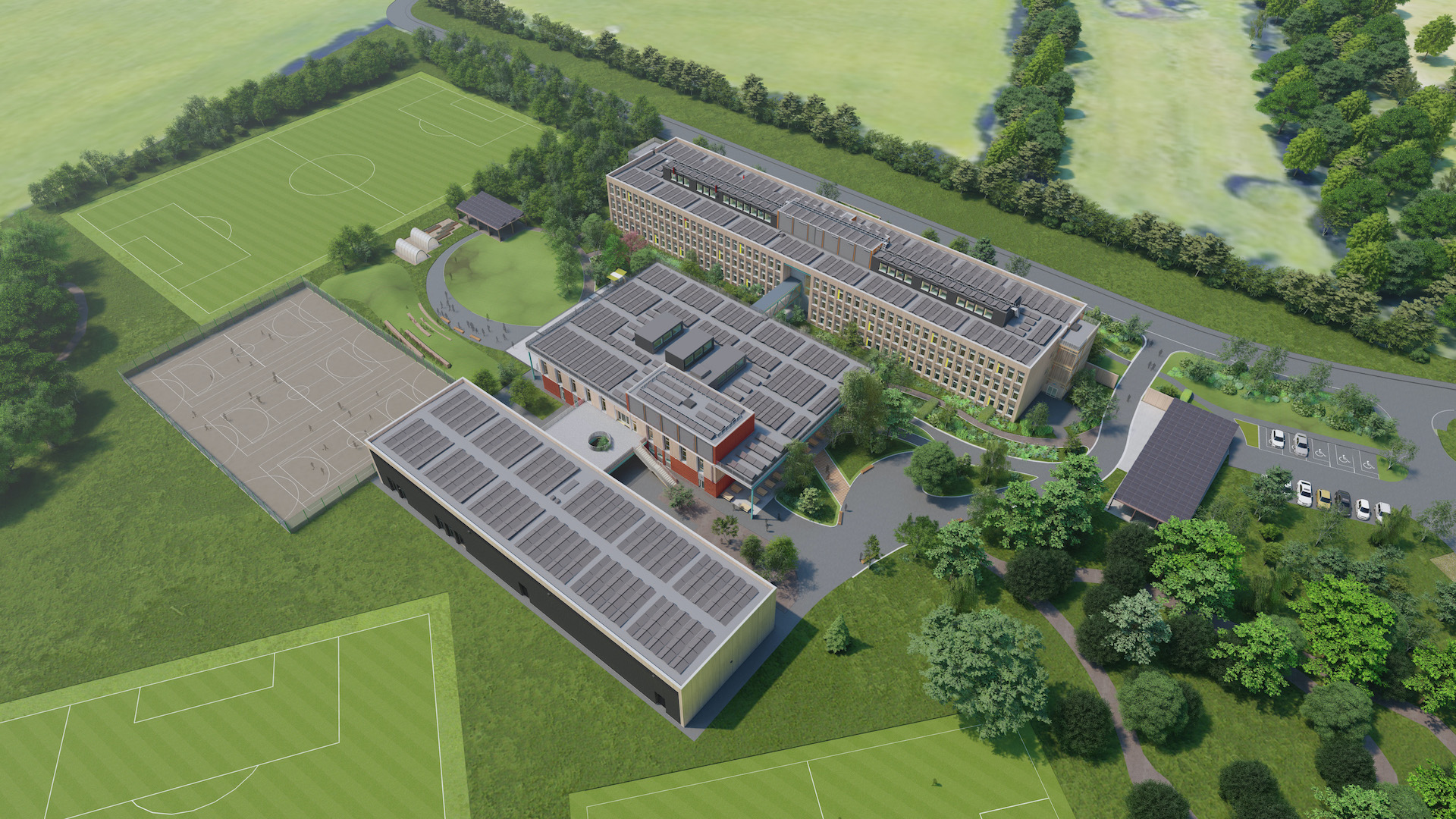
A digitally delivered project
A fundamental part of the GenZero brief was that the project should be delivered as a true ‘digital twin’ through the use of advanced digital modelling, the latest software technology and BIM.
Seven different disciplines were involved in the project, and each consultant was required to produce rich data models, including linked specifications (in NBS Chorus) for every element. All data exchange and coordination used only IFC files and all consultants worked to Uniclass classification for all components and model objects.
Lyall Bills & Young worked with Archicad from the outset and imported files from other disciplines into Archicad to create a federated model.
Carlos Schwarz Rodriguez, architect at Lyall Bills & Young explains,
Thanks to the use of Archicad, we were able to easily produce IFC files that included all the required data. Moreover, we were able to import every IFC model from the other consultants into Archicad and we then used the federated model to inform and refine our design.
The decision to require an openBIM workflow allowed each designer to choose the right tool for them: the architectural model was produced using Archicad while other designers used other software packages.
The coordination of the seven disciplines was successful thanks to the efforts of a great team.
Defining workflows for data exchange
Data exchange was critical to the success of the project and required careful management and testing of workflows for import and export of large complex models.
This data exchange process was defined by Bond Bryan Digital in line with the DfE brief and refined over the course of the project.
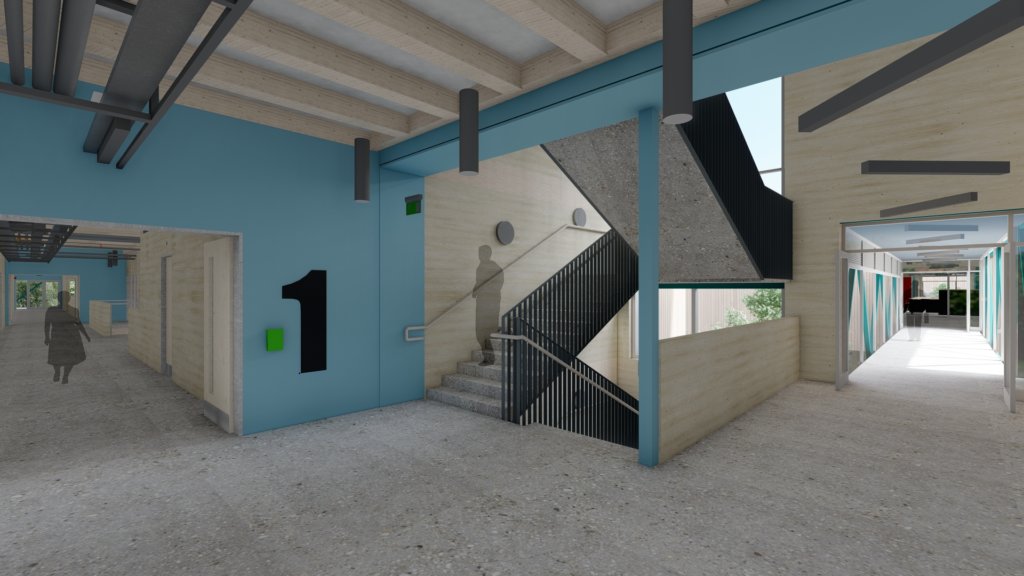
MEP services were modelled in unprecedented detail and formed the basis of both the services engineers’ technical output as well as the architectural visualisations, says Carlos.
As so many services were on show in the final design, it took some time and effort to reach a level of visual refinement not normally seen in MEP models.
A holistic view of sustainability
Although low embodied and operational carbon were fundamental drivers for the project, the brief recognised from the outset that a much broader definition of sustainability was needed if the project was to be a success.
GenZero was therefore founded on the DfE’s three core design standards:
- Healthy and productive environment
- Designed to be safe, secure and sustainable
- At the right size
At the heart of the project brief was the need for new schools to not only offer a safe and secure environment that supports users’ needs, but also to create long lasting solutions that can and will be retained for many decades.
Informing future school specifications and standards
Two school prototypes were developed, one designed for a tight urban environment and the other for an unconstrained suburban site.
They were designed to allow the delivery of buildings with a high degree of off-site manufacture. Three types of construction were proposed: panellised, volumetric and framed.
The panellised components form an innovative ‘kit of parts’ and were carefully considered to be as efficient as possible, to enable maximum standardisation and to minimise the use of carbon. Timber was the only option to meet the low carbon targets and approximately 85% of the final prototypes were designed with panellised cross-laminated timber (CLT), together with glulam and volumetric steel frame modules. Interior surfaces were left exposed to further minimise the use of plasterboard and paint.
We are particularly proud of the choice of low carbon materials that provide finishes that are both robust and pleasing to the senses. We are also proud of how the buildings work in connection with nature, to provide a biophilic setting for the school in a thoughtfully designed protective landscape, explains Carlos.
Another key project requirement was the production of Room Data Sheets for every space. These described both the DfE’s detailed requirements, including things like size, room height, thermal comfort limits and furniture, as well as the proposed outcomes delivered by the project.
Thanks to Archicad’s data import capabilities it was possible after some trial and error to import data, via an Excel spreadsheet, from a native Revit model produced by the services engineers and combine it with data from the architectural model. This data set was then exported via IFC to form the basis of the Room Data outputs, explains Carlos.
The outcomes of the project are now being used by the DfE to inform future schools specifications and standards.
An iterative design and communication process
The research nature of the project meant that workflows were not linear and that flexibility was needed for change at every stage.
Optioneering and testing of different ideas was a fundamental part of the development process, says Carlos. “This relied heavily on the tools available within Archicad, such as the renovation filters which we adapted for optioneering, that enabled us to quickly develop ideas and complete designs for testing and review.
We also relied heavily on the Archicad model to communicate ideas with the DfE client team in an engaging way during online workshops, as face-to-face meetings were not possible at the time due to Covid restrictions. We created renders in Archicad and Twinmotion while the landscape architects opted for Lumion.
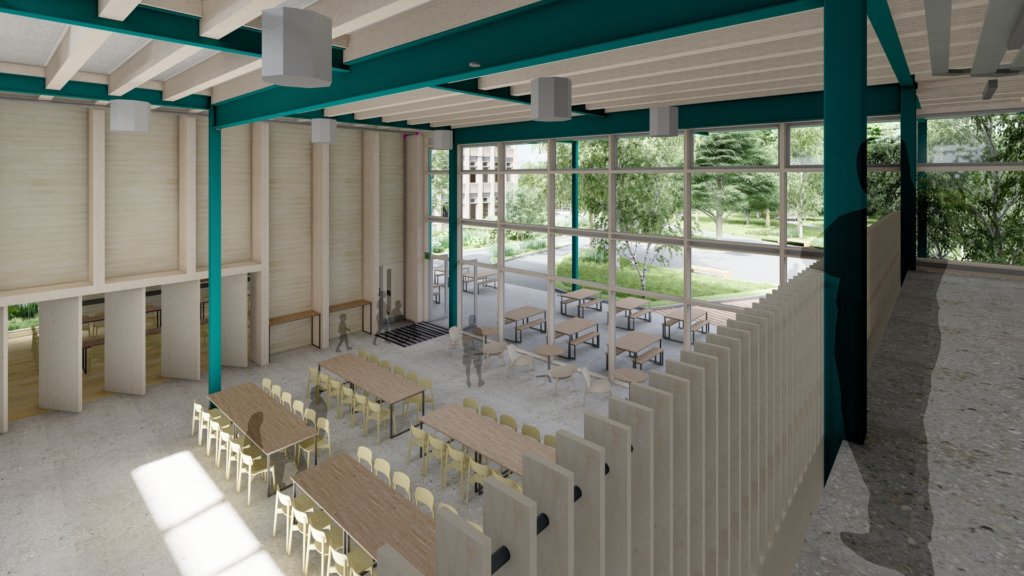
Ultimately, this has been a very successful, digitally delivered research and development project that has been made possible by high levels of collaborative working and highly advanced BIM.
The GenZero project won the BuildingSMART International Awards 2022 in the Design for Buildings category.
